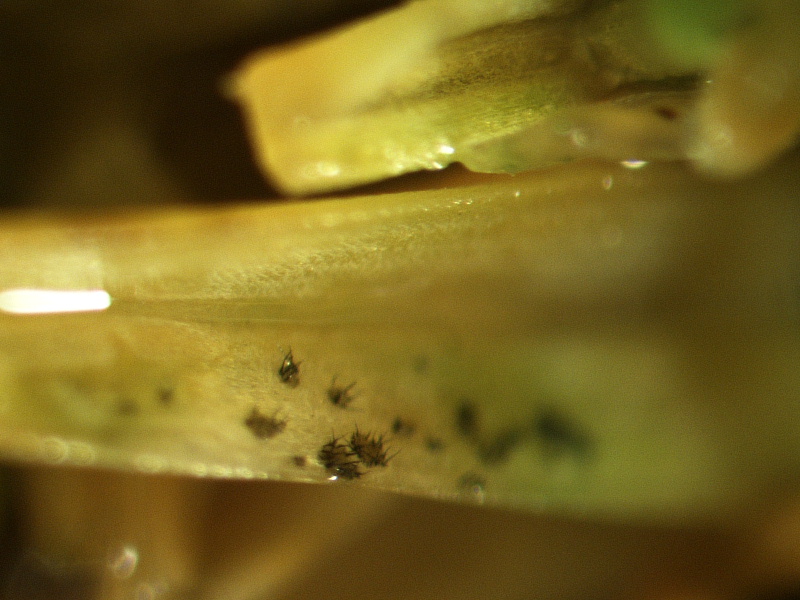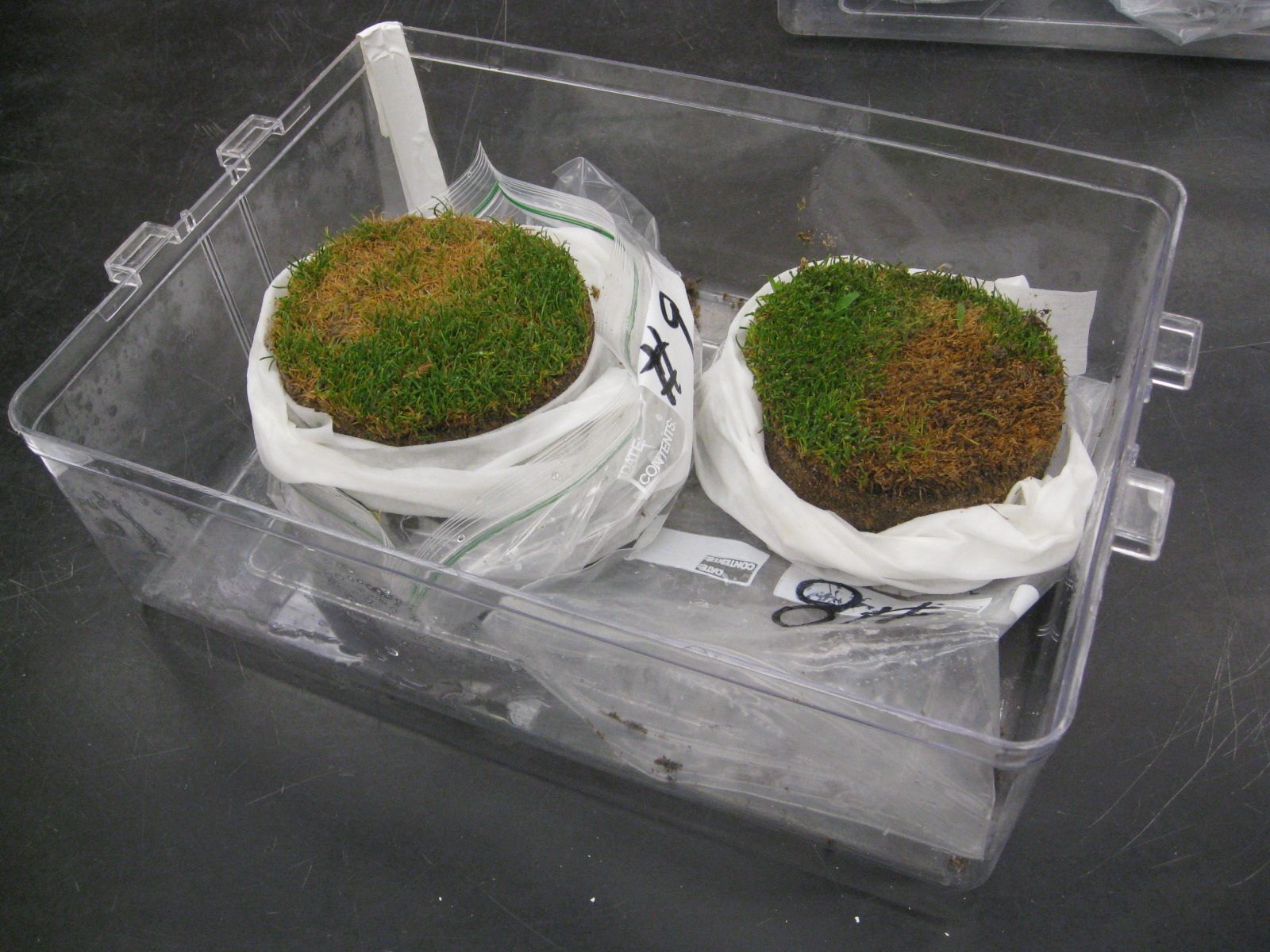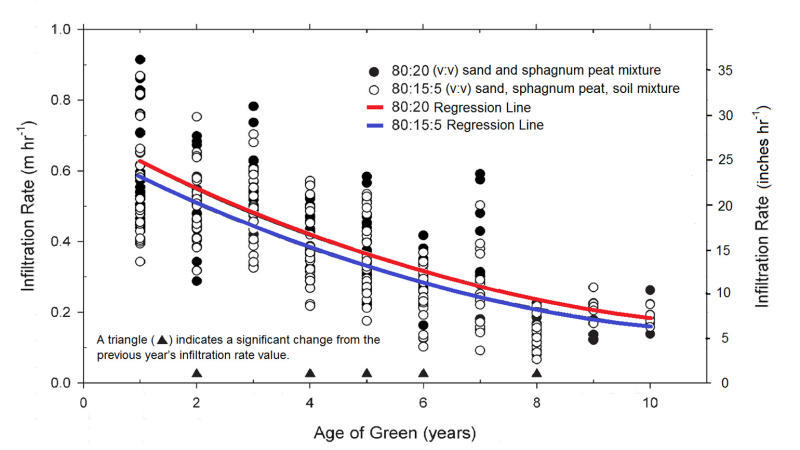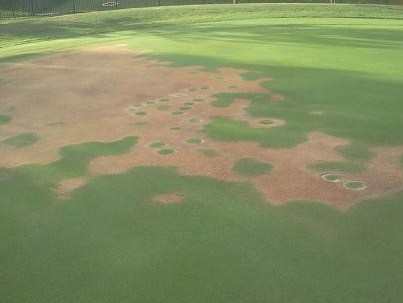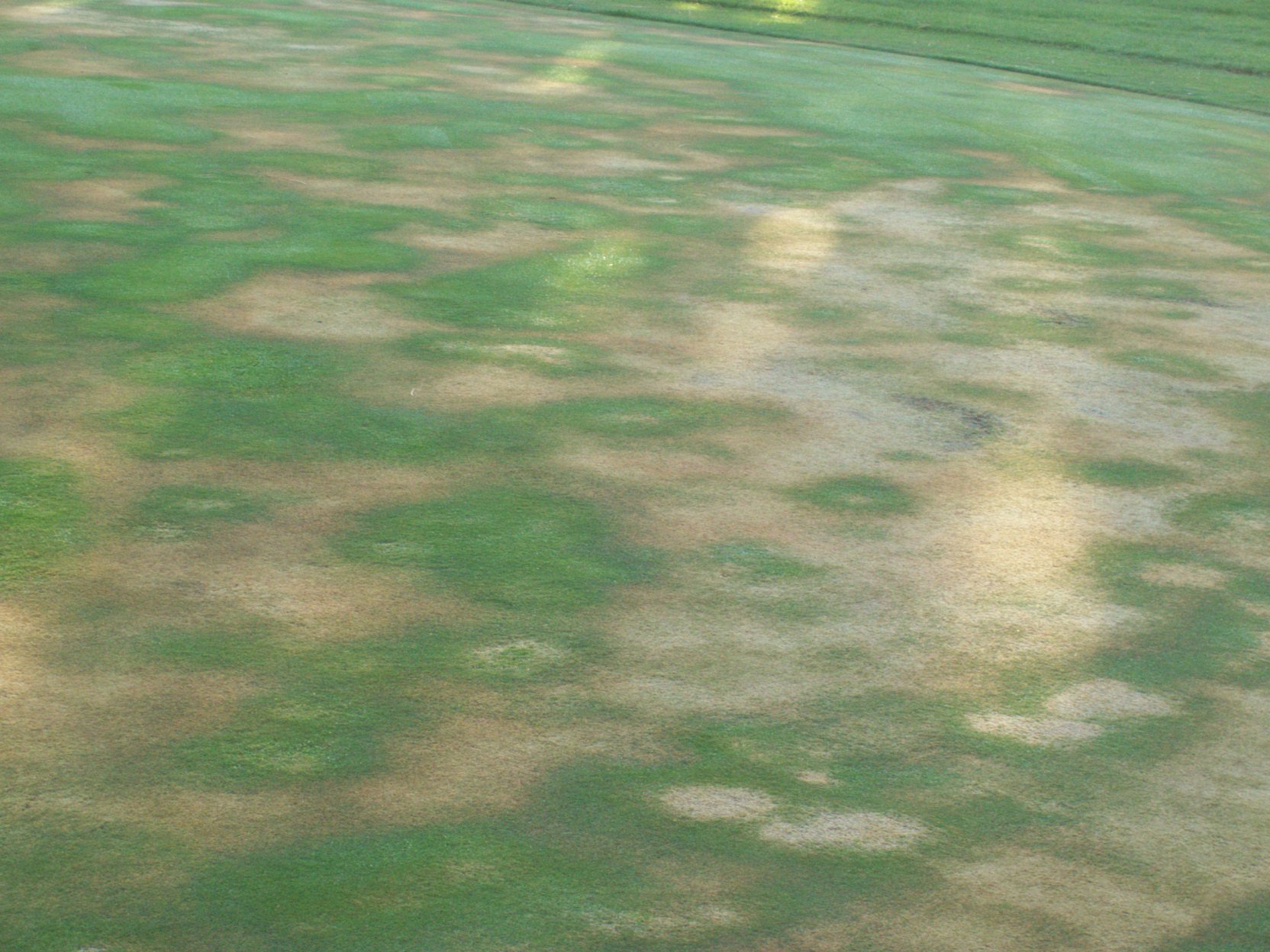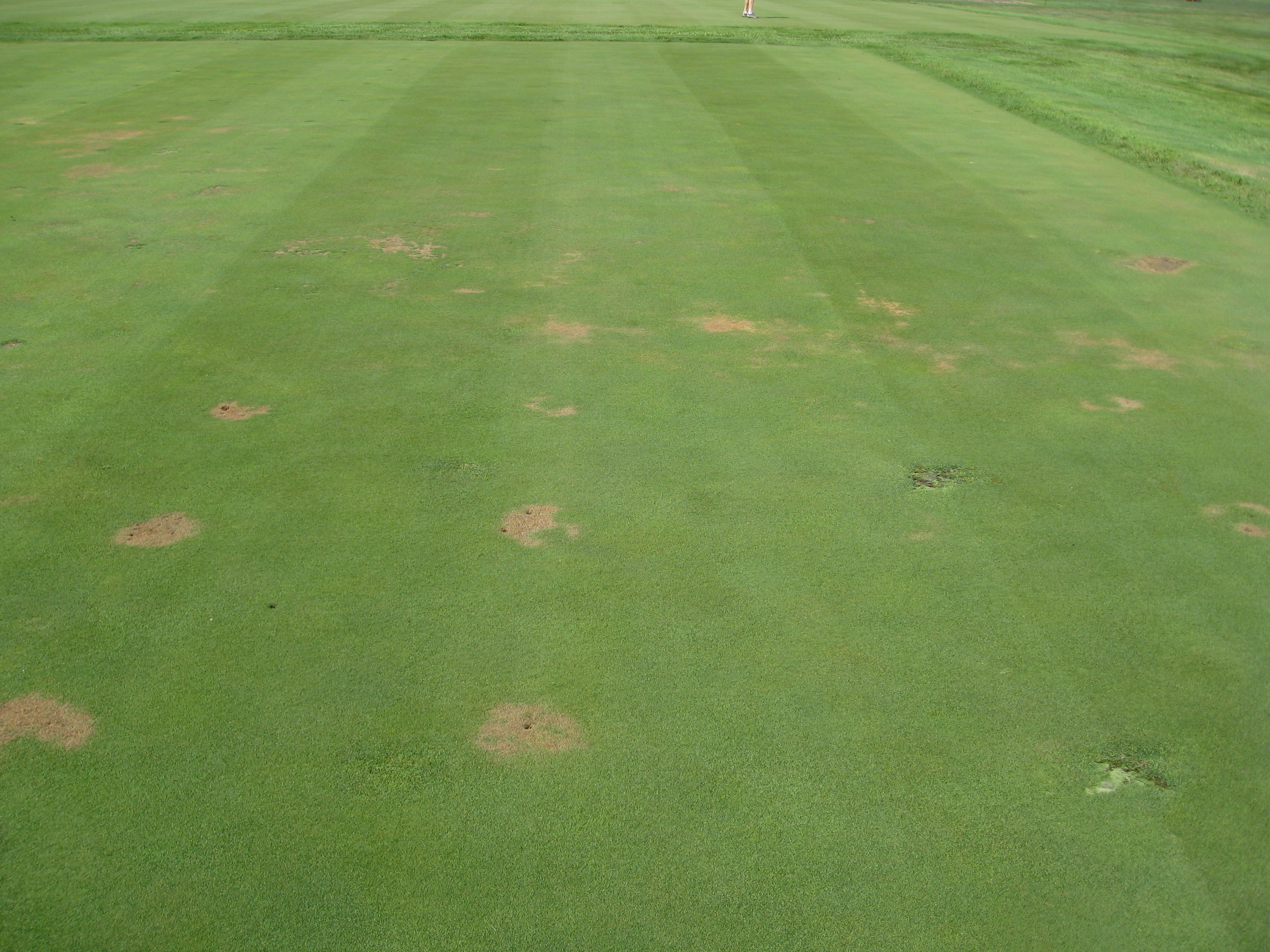We recently received a sample with anthracnose crown rot. Anthracnose can be tricky to diagnose from a distance or a drive-by. The symptoms can look like other diseases or stresses such as physiological root decline. Another tricky thing is that those same stresses can make the turf more prone to anthracnose. Yikes! It’s worth investing in a high-quality hand-lens, and with a good hand lens and a steady-hand you can often see the anthracnose structures lurking down at the base of plants. Sending to the lab as a follow-up is another good step, since we can look for other pathogens that might be lurking in the roots.
The photo below is through a dissecting microscope, but those same dark spines can often be seen with a hand lens. Look for structures on green tissue, not brown/dry tissue. Anthracnose is pretty good at colonizing stuff that is already dead, as an opportunist. When we see it on juicy green tissue that is when the disease is active.
For more on anthracnose, including several photos you can check this page:
http://www.bookstore.ksre.ksu.edu/pubs/EP147.pdf
Here is an excellent list of best management practices:
http://turf.rutgers.edu/research/bmpsanthracnose2015.pdf
Last but not least, anthracnose is one of the many diseases covered here:
http://www2.ca.uky.edu/agcomm/pubs/ppa/ppa1/ppa1.pdf
Many of the practices to reduce anthracnose also promote overall turf health. That is, when you implement agronomic practices to promote good rooting you also reduce the risk of anthracnose and other problems. You may not be able to do ALL of the beneficial agronomic practices you would like, due to budgetary limits or lack of equipment or golfers’/greens committee opinions, but the more you can fit in, the better.
